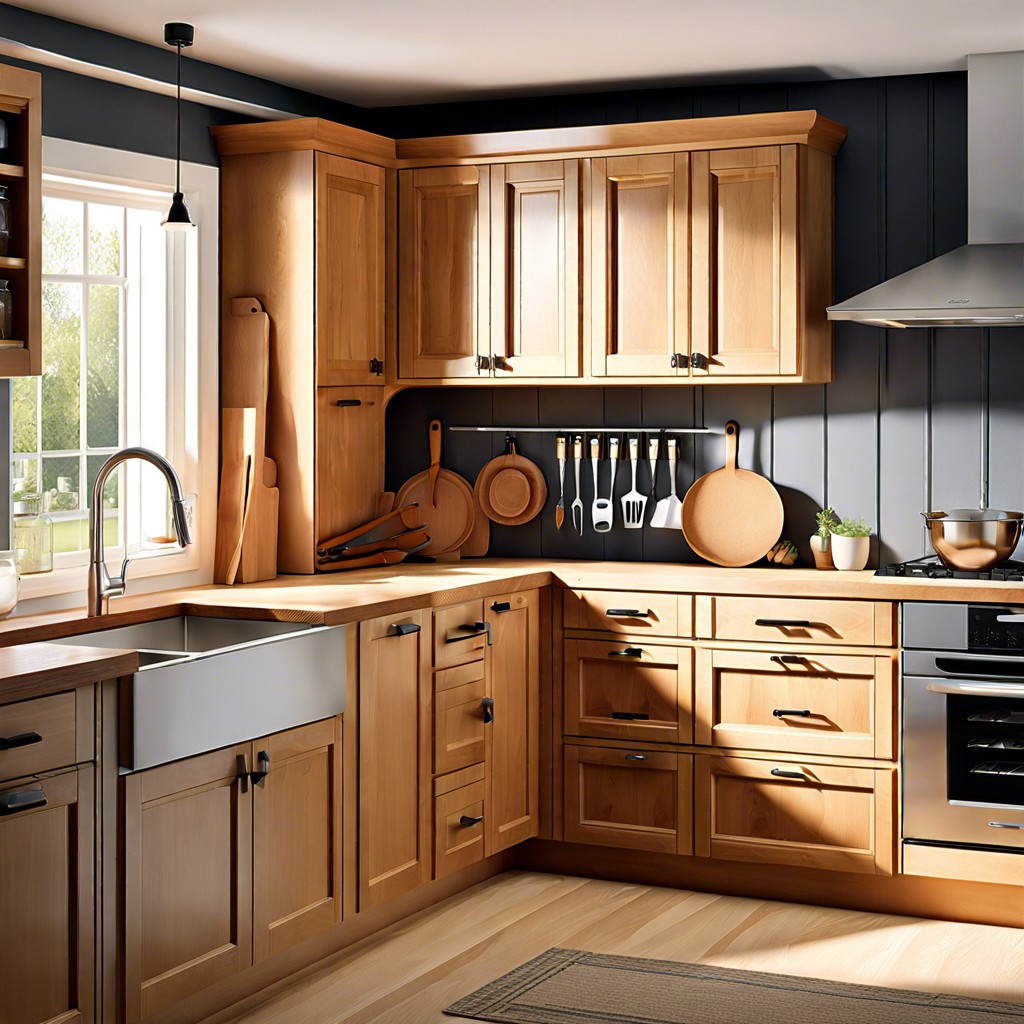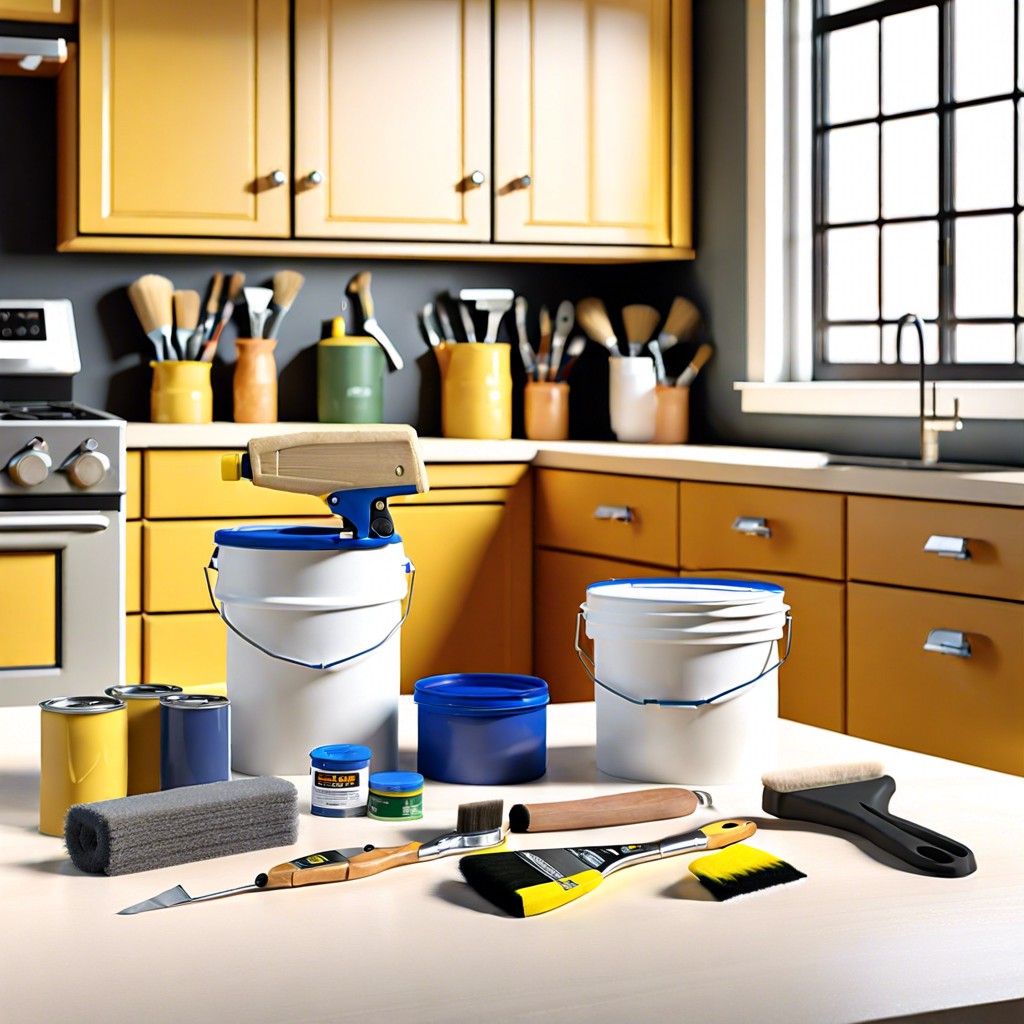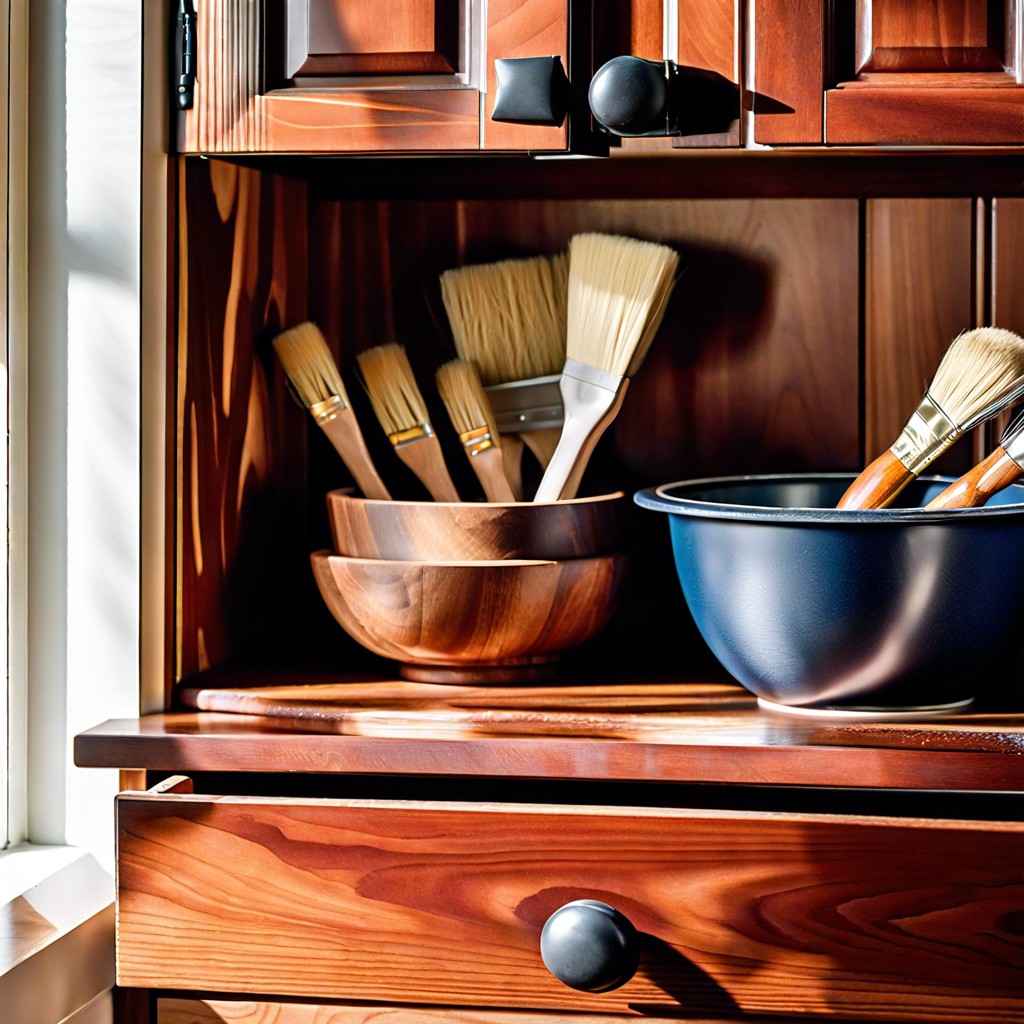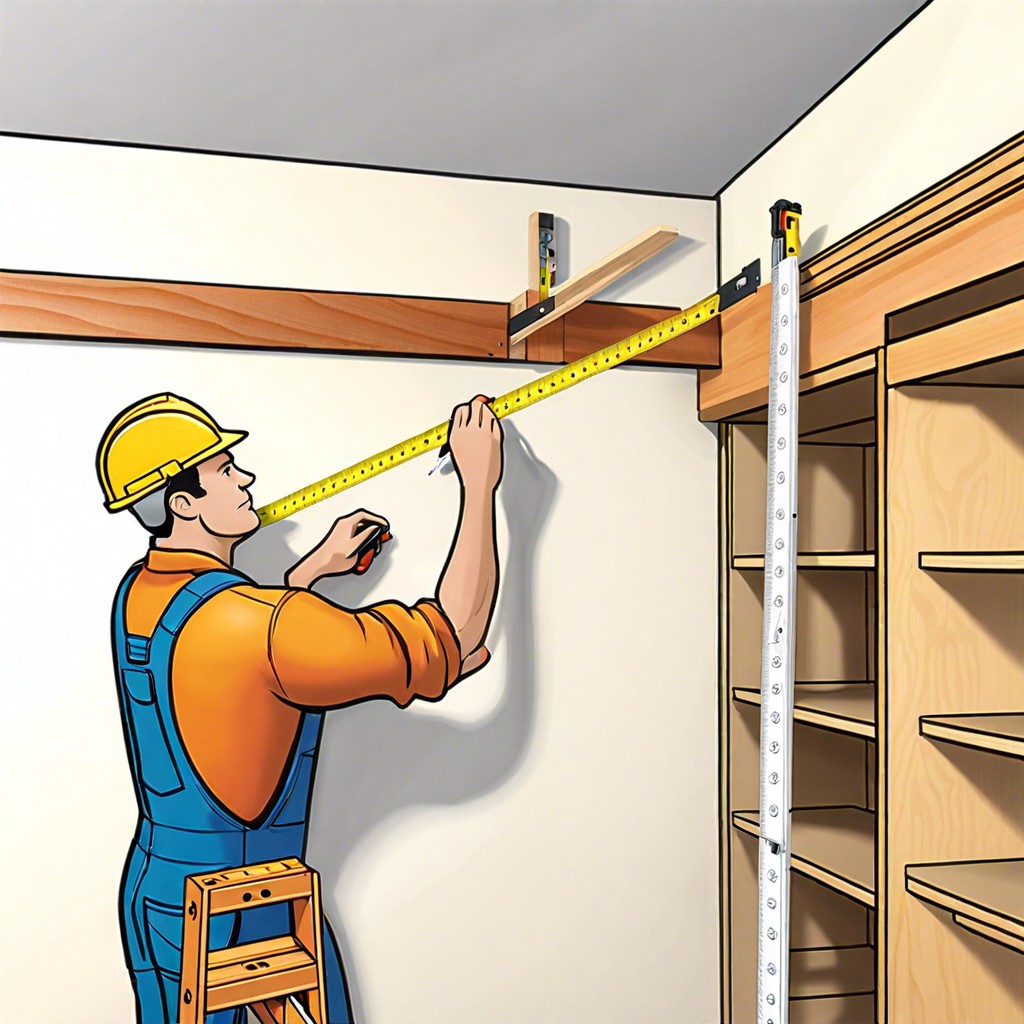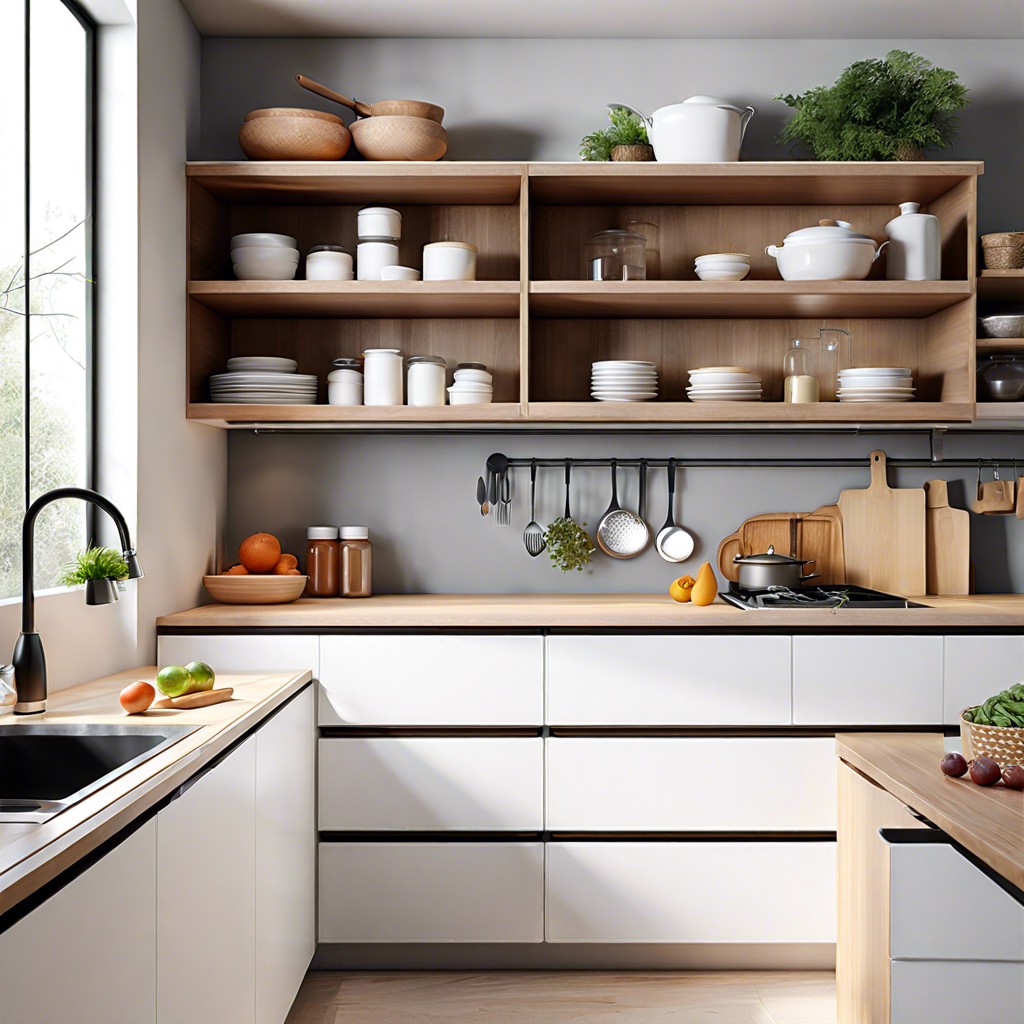Last updated on
Discover the best paints for your cabinets, their distinct features, and how each can transform your kitchen or bathroom space.
Key takeaways:
- Enamel, water-based, and hybrid paints for durability and ease of use.
- Consider sheen for easy cleaning without emphasizing flaws.
- Primer is essential for paint adhesion and longevity.
- Factors to consider: durability, drying time, fumes, and expertise.
- Top pick: Sherwin Williams Emerald Urethane Trim Enamel Paint with low odor and smooth finish.
What's Inside
Best Paint for Cabinets: A Comprehensive Analysis

When delving into the world of cabinet paints, an understanding of various formulations is key. Enamel paint, known for its durability, is often the go-to choice for cabinets subject to frequent use. Water-based acrylic enamel offers a balance between toughness and ease of use, allowing for quick cleanups and lower VOCs (Volatile Organic Compounds), which translates to less odor and a safer environment during application.
Oil-based paints, with their unparalleled hardness and protective qualities, can provide a remarkable finish. However, they do come with a slower drying time and a more pungent smell, necessitating good ventilation. They also require mineral spirits for cleanup, as opposed to water for water-based paints.
Hybrid enamel paints merge the easy cleanup of water-based paints with the hard finish traditionally associated with oil-based options. They’re a stellar choice for those seeking durability without the inconvenience of a lengthy cleanup process.
Furthermore, the sheen of the paint plays a significant role. Glossy finishes are easy to wipe down and resist stains, but they can highlight surface imperfections. Satin or semi-gloss finishes strike an ideal balance, offering a surface that withstands cleaning without overly emphasizing flaws.
In each scenario, primer is non-negotiable for ensuring paint adheres well and provides a surface that stands the test of time. Opt for a primer that complements your choice of paint—water-based for acrylic enamels and oil-based for corresponding paint types.
With these considerations, choosing the right paint becomes less about the brand and more about the properties that fit your specific needs. Always take into account the scope of your project and intended wear and tear on your cabinets to ensure you select the most appropriate product.
Things to Consider
Selecting the right paint for your cabinets involves more than just picking a color that catches your eye. Durability is paramount, as kitchen cabinets endure more wear and tear than most other painted surfaces in your home. Look for options specifically formulated for cabinetry; these will usually be tougher and more resistant to chipping and peeling.
Finish is another critical component. Glossy finishes can highlight imperfections but are easier to clean, making them suitable for families with children or for lower cabinets. Matte finishes, on the other hand, can give a more sophisticated look but might require more maintenance.
Don’t forget to consider drying time and potential fumes. Water-based acrylic paints often have lower VOCs and less odor, making them a good choice for indoor projects, whereas oil-based paints are praised for their durability and smooth finish but might take longer to dry and be less eco-friendly.
Finally, factor in your own level of expertise and the tools you’re willing to use. Some paints work better when sprayed on, offering a flawless finish, while others can be forgiving when brushed or rolled on. Your choice might change if you’re a DIY beginner versus an experienced home improver.
Sherwin Williams Emerald Urethane Trim Enamel Paint
When considering a top-tier option for your cabinet revamp, don’t overlook the durability and sheen that this product offers. As a water-based urethane enamel, it combines the best of both worlds: the ease of use associated with acrylic paint and the toughness typically found in oil-based options. This fusion means low odor during application and a faster drying time, allowing you to complete your project with speed and efficiency.
Moreover, the finish is hard-wearing, standing up admirably to the frequent cleaning that kitchen cabinets require. It’s resistant to staining and offers a luxurious smooth finish that will make your cabinets look as though they’ve been professionally sprayed. Additionally, its resistance to yellowing is a major plus, especially for those who love the crisp, clean look of bright white cabinets.
The self-leveling properties of the paint minimize brush strokes, which is a game changer for the DIY enthusiast looking to achieve professional results. A right roller or brush can aid in this endeavor, ensuring that the final appearance is as sleek and uniform as the day it was applied.
Application on properly prepped surfaces yields the best results. A primer might be necessary, especially if you’re transitioning from a darker to a lighter color. It’s also worth mentioning that this paint’s adherence is admirable on a variety of materials, from wood to laminate, making it a versatile choice for various types of cabinetry.
How to Paint Cabinets for a Factory-smooth Finish
Achieving a factory-smooth finish on your cabinets requires meticulous preparation, the right tools, and a steady hand. Begin by removing all hardware and cleaning the surfaces thoroughly to eliminate dirt and grease. Sanding is crucial; start with a medium-grit sandpaper to remove the old finish and then use a fine-grit paper for a smooth base. Wipe down with a tack cloth to remove dust.
Priming is your next step. Use a high-quality primer that will stick to your cabinet’s existing surface and create an even base for your topcoat. When the primer is dry, sand again lightly to knock down any texture.
For the smoothest finish, consider using a paint sprayer instead of a brush or roller. Sprayers distribute paint evenly without leaving brush strokes or roller marks. If you opt for a brush, a high-quality synthetic bristle brush is best for water-based paints, while a natural bristle brush pairs nicely with oil-based types.
Apply paint in thin, even coats to prevent drips and buildup. After each coat, examine for imperfections, sanding lightly if needed, and clean the surface before applying the next. Patience between coats is key; allow ample drying time.
Lastly, practice makes perfect. Hone your technique by practicing on scrap wood before taking on your cabinets. This will ensure a confident application when it’s game time. Remember, the goal is a smooth, durable finish that will withstand the test of time and use.
Favorite Kitchen Cabinet Paint Colors in 2023
Trends ebb and flow, and the world of kitchen cabinetry is no exception. This year, color palettes are dancing between timeless and modern, offering options that cater to every taste. Consider the subtle warmth of Greige, a hybrid between gray and beige, serving both contemporary and classic design sensibilities. This chameleon shade pairs well with a myriad of accent colors and décor styles.
For those drawn to the serenity of nature, Sage Green emerges as a top choice. It infuses a breath of organic tranquility into the heart of the home, reflecting the growing desire for earthy connections within our living spaces.
Navy Blue is making a bold statement, providing a dash of drama without overpowering the room. This versatile, deep hue complements metallic fixtures and works beautifully with both marble and wood countertops.
Finally, Charcoal remains a staple for those seeking a sleek and sophisticated look. Its ability to anchor the space with an elegant touch of gravity makes it a perennial favorite among designers and homeowners alike.
Each color offers a different energy, transforming cabinets from mere storage solutions into pivotal elements of a room’s character and style.
